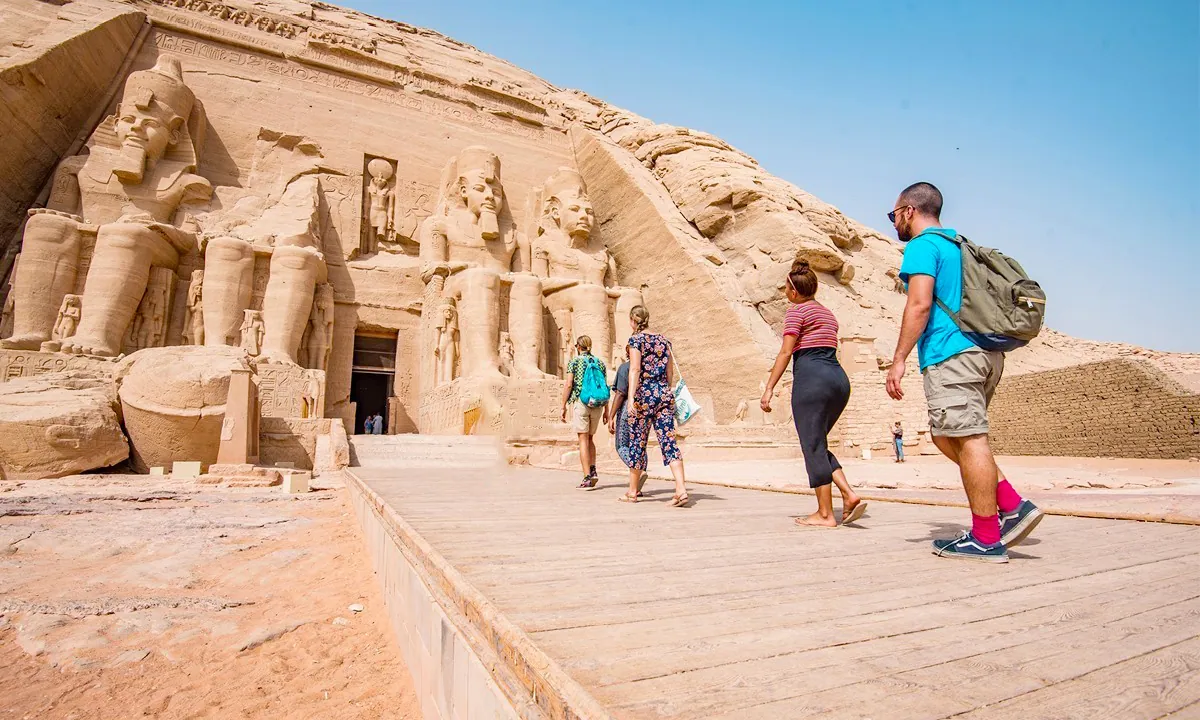Egypt is a land of history and culture that attracts tourists from all over the world to its famous landmarks and monuments. One such wonder is the Abu Simbel temple, located in the Nubian desert of southern Egypt. It is an archaeological site that dates back to the reign of Pharaoh Ramses II. The temple is famous for its colossal statues, intricate carvings, and rich history. Visiting Abu Simbel is a remarkable experience that showcases the grandeur of ancient Egypt and is a must-visit place for any history enthusiast. This blog post is focused on sharing my beautiful experience while taking a day tour to Abu Simbel day tour from Aswan.
The tour started early in the morning from Aswan, where I boarded a minibus that took me to the Abu Simbel temple complex. The journey from Aswan to Abu Simbel is approximately 3 hours long, but it is well worth it. The road leading to Abu Simbel is scenic, with stunning views of Lake Nasser and the desert landscape. We stopped at various points of interest along the way to capture some photos and admire the terrain. The tour guide provided rich historical and cultural insights about the Nubian communities that live in the area.
Upon reaching Abu Simbel, I was awestruck by the grandeur of the temple. The temple complex comprises two massive temples —The Great Temple of Ramses II and the Small Temple of Hathor. The Great Temple is the most impressive of the two and is famous for its colossal statues of Ramses II, which are 20 meters tall and guarded by four smaller statues each measuring 10 meters. The temple is dedicated to the gods Amon, Ptah, and Ra-Horakhty.
The temple’s interior is equally impressive and features various chambers and halls adorned with intricate carvings, inscriptions, and paintings. The most notable chamber is the Hall of Columns, which has eight massive pillars decorated with intricate hieroglyphics. The temple’s size, grandeur, and historical significance are sure to leave visitors in awe.
After exploring the Great Temple of Ramses II, we proceeded to the Small Temple of Hathor. This Temple is dedicated to the goddess Hathor, wife of the sun god Ra. The temple is smaller in size and has a more intimate feel compared to the Great Temple. It has beautiful carvings, decorations, and prominent pillars. The ceiling of the temple has intricate designs of zodiac signs that have daily astronomical significance.
The Abu Simbel temple complex is a UNESECO world heritage site that is a testament to ancient Egypt’s architectural and engineering achievements. Visiting such magnificent sites always gives appreciation and admiration for the cultures of our past.
The tour back to Aswan was equally memorable. As the minibus traveled back to Aswan, the tour guide shared more stories about the Nubian communities, their lifestyles, and unique culture. The journey back was smooth and without any surprises, and I had ample time to reflect on my beautiful experience at Abu Simbel.
Conclusion:
In conclusion, taking a day tour from Aswan to Abu-Simbel was one of the best experiences I had while in Egypt. The temple complex is a remarkable site that showcases ancient Egypt’s grandeur and architectural excellence. The tour was informative, engaging and allowed me to gain insight into Nubian culture and history. Visiting Abu Simbel is an excellent opportunity to appreciate and explore ancient cultures while enjoying the natural beauty of southern Egypt. I highly recommend this experience to any history enthusiast or tourist visiting Egypt.


